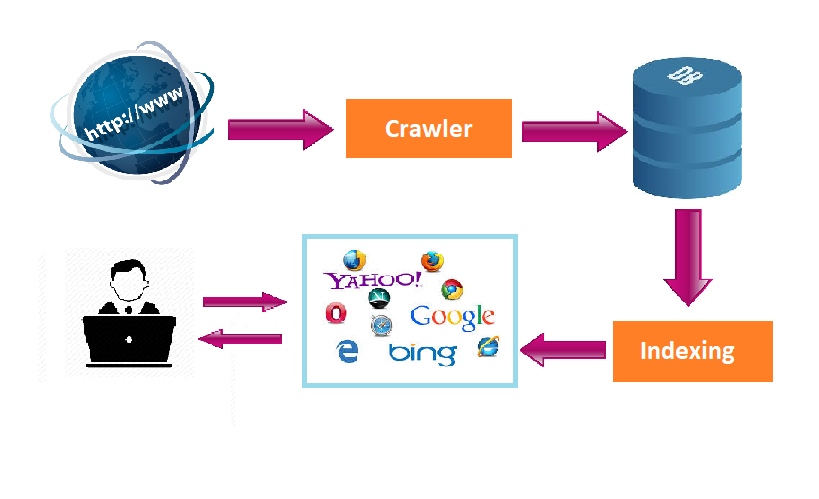Local SEO remains vital to smaller industries that function on a local as regional level. Whereas nationwide SEO concentrates more towards ranking in online searches throughout the country, local SEO highlights the brand’s page to appear within SERPs (specific location). The regional SEO approach depends on advertising a brand, services, and products to native customers and leads.
-
Form a Google- My Business Profile
Boosting your Google listing (alias your Industry Profile) is possibly the most active technique to rank greater within Google Maps and gain presence in Google Search engine results page. Anyhow, marketers should get the resources to form a valid business account inside Google to boost optimizations. Once marketers submitted their required info under their Google My Business profile control panel and included their Business Summary. It presents inside Google Search local results, Google Maps, and Google Search Knowledge Panel for users.
-
Gather Valued Reviews from Customers
Receiving more customers to post valuable reviews for a business doesn’t merely optimize their Google My Business presence. Trollishly inspire more local clients to purchase from a brand through reviews. BrightLocal – a brand in 2017 organized by Local Consumer Review Survey, reveals that 85% of clients believe social reviews are further than personal references.
Here are specific tips to boost customers in posting reviews:
- Enquire for an evaluation personally after the closing of a trade
- Practice a post-buying email or message asking clients to compose a review
- Reply to current reviews in a qualified way, recognizing critics and addressing criticisms in not-so-positive studies.
- Enhance Brand Presence Through Voice Search
The innovative Voice search technique multiplies in the coming ages. Therefore, it’s crucial to improve how audiences ask queries inside local SEO practices when they express through devices versus how they compose out manual searches.
Indeed, a brand’s clients use additional long-term keywords while pursuing voice searches than the regular search. Marketers will also need to modify the SEO of their content to a suitable conversational manner of somebody responding. For example, marketers need to prepare for the usual query types like (how, where, why, who, what, and when).
-
Upload Content Related To Local Movements
There’s nothing better than authoring unique content that expresses or narrates openly to a native issue to grasp targeted local clients’ attention.
Certain strategies contain:
- Composing blog articles around native news stories, actions, or events
- Forming videos around local bases or charities that your industry supports
- Creation of location-based pages inside the brand’s website using high-class related content if businesses function in various parts of a country
- Optimize Brand’s Web page for Mobile Users
In 2019 a brand “Stone Temple” researched 2018’s desktop vs. mobile trends and discovered that mobile devices’ change is happening faster than projected. Website engagement through mobile rose 57% (2018) to 63% in 2018, and complete attention with websites after desktop minimized from 43% in 2018 to 37% in 2019.
An additional study gathered by Acquisio in 2019 stated that traffic after native searches might be specifically productive, with a notable 75% of overall mobile surfs that unveil native intent, essentially creating offline visits and in-store within a day.
Such analysis indicates that businesses have to augment their website performance for mobile users to perform local SEO practices.
Here are selected tips to accomplish this:
- Confirm a brand’s website appears quickly (not above three seconds of loading)
- Place larger fonts that appear easy to read.
- Prefer descriptions and image cautiously, carrying only the data that users need (avoid using filler inside the mobile site)
- Ensure genuine UI for better UX
-
Include Local Keywords
A brand’s keywords stay relative to native clients.
Google’s exclusive Keyword Planner permits the brand advertisers to filter keyword searches liable to location actively; therefore, brands can acquire an impression of the extensive search languages for a known region. These practices let businesses produce a list of nearby important keywords to aim. When marketers have keywords, they should create arrivals on their web page’s copy, URLs, and Meta content. Also, place references of region-exact landmarks and milestones in web content.
-
Exploit Social Business Directories
Several online industry directories are pages similar to Foursquare, Yellow pages, MapQuest, and Yelp tool. It facilitates receiving a valued business name, reference, and communication details into these web pages help in better presence, but it’ll likewise boost their local SEO.
-
Concentrate Over Link Signals (Place High-Class Backlinks)
As stated by Moz’s recent Local Search Position Features research, link signals remain as the leading- and second-maximum significant factors for native package outcomes and confined organic effects, separately. Link signals remain as backlinks aiming to brand site. It’s crucial to acquire links to increase a brand’s local SEO. However, their excellence is essential.
SEO modifications are quite fast. Businesses are mostly uncertain when Google might present new structures on built-in SERPs aimed at local searches; however, marketers can be sure of these variations coming. Therefore organizations need to practice the factors mentioned above to stay always on first of current local SEO.



